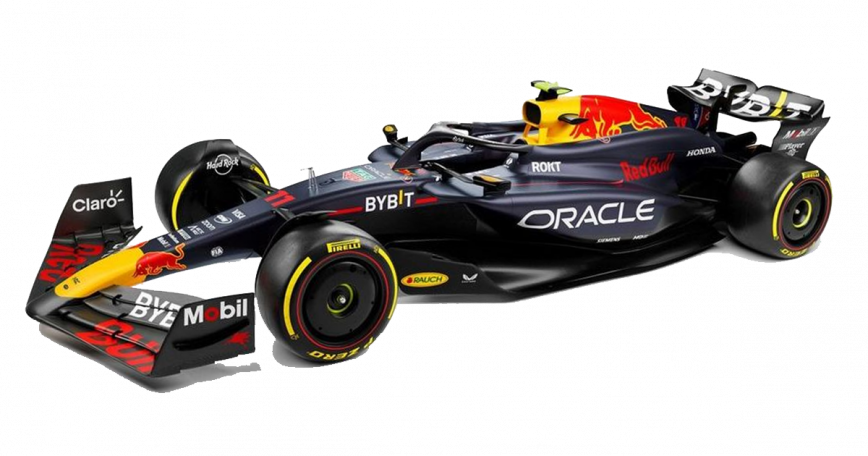The Symphony of Speed: How F1 Sound is Made

If you’re a car enthusiast, you know that nothing quite compares to the roaring symphony of a Formula One (F1) car. The high-pitched scream of the engines, the throaty growl of acceleration, and the explosive pops and bangs on downshifts create a soundtrack that thrills racing fans around the world. But what exactly goes into creating this unique and exhilarating sound? Let’s dive into the secrets behind the iconic noise of F1 cars.
The Heart of the Beast: Engine Configuration
F1 engines have undergone significant changes over the years, but the sounds that captivated fans the most came from the V8, V10, and V12 eras. These engines were naturally aspirated, meaning they relied on atmospheric pressure for air intake, without the use of turbochargers. This allowed them to rev extremely high—up to 20,000 RPM—producing a high-pitched scream that became synonymous with F1 racing.
The V8 engines, used from 2006 to 2013, were smaller and lighter, yet still packed a punch with their distinctive sound. However, it was the V10s (used from 1995 to 2005) and the V12s (used in the late ’80s and early ’90s) that produced the most memorable roars, thanks to their larger displacements and higher cylinder counts.
The Exhaust System: Crafting the Roar
A significant part of the F1 car’s sound comes from its exhaust system. The design and materials used in the exhaust are critical in shaping the final audio output. F1 exhaust systems are typically made from lightweight and heat-resistant materials like Inconel, a nickel-chromium alloy. This allows the exhaust to withstand the extreme temperatures generated by the high-revving engines.
The length and diameter of the exhaust pipes are meticulously designed to enhance the engine’s sound. Shorter exhaust pipes produce a sharper, more aggressive note, while longer pipes can create a deeper, more resonant sound. The exhaust gases exit the pipes at high speeds, creating the characteristic pops and bangs during gear shifts and deceleration.
Acoustic Tuning: The Role of Helmholtz Resonators
One of the lesser-known secrets behind the iconic F1 sound is the use of Helmholtz resonators. These devices are strategically placed within the exhaust system to amplify specific frequencies and create a richer, more complex sound profile. By fine-tuning the size and placement of these resonators, engineers can enhance the engine’s natural acoustics and produce that unmistakable F1 scream.
The Impact of Turbochargers
The introduction of turbocharged V6 engines in 2014 marked a significant change in the sound of F1 cars. Turbochargers compress the intake air, increasing the engine’s efficiency and power output. However, this also muffled the natural sound of the engine, leading to a quieter and less aggressive exhaust note.
To address this, engineers have experimented with various techniques to improve the sound of turbocharged engines. One approach is the use of wastegates, which control the amount of exhaust gas flowing through the turbocharger. By modulating the wastegate, engineers can create distinctive pops and bangs, adding character to the turbocharged engine’s sound.
Aerodynamics and Sound
Aerodynamics play a crucial role in the overall performance of an F1 car, but they also influence the car’s sound. The interaction between the airflow and the car’s bodywork generates a unique blend of noises, including the high-pitched whine of the air passing over the wings and the deep rumble of the tires on the track.

The car’s bodywork and aerodynamic components are designed to minimize drag and maximize downforce, but they also shape the way sound is emitted and perceived. The positioning of the exhaust outlets, for example, can affect how the sound waves propagate, contributing to the car’s distinct acoustic signature.
The Human Element: Driver Input
An often overlooked aspect of the F1 soundscape is the role of the driver. The way a driver modulates the throttle, shifts gears, and navigates the track can significantly influence the car’s sound. Aggressive acceleration and braking, rapid downshifts, and high-speed cornering all contribute to the dynamic and ever-changing symphony of an F1 race.
Drivers also use engine mapping and mode settings to adjust the engine’s performance characteristics. These settings can alter the exhaust note, adding another layer of complexity to the car’s sound. During qualifying sessions, for example, drivers may use more aggressive engine modes that produce a louder and more intense sound.
The Future of F1 Sound
As F1 continues to evolve, so too will the sound of the cars. The shift towards hybrid power units and sustainable technologies presents new challenges and opportunities for engineers to create exciting and distinctive sounds. While the turbocharged V6 engines of today may not match the sheer volume of the V10 and V12 eras, advancements in acoustic engineering and exhaust technology promise to keep the thrill of F1 sound alive.
In the future, we may see innovations like synthetic sound augmentation, where additional speakers or resonators are used to enhance the natural engine sound. This could allow engineers to recreate the iconic roars of the past while meeting modern performance and environmental standards.
Conclusion
The sound of an F1 car is more than just noise; it’s a carefully crafted symphony of engineering excellence and human skill. From the high-revving engines and finely-tuned exhaust systems to the driver’s inputs and the aerodynamic design, every element contributes to the thrilling auditory experience that defines Formula One racing. As technology continues to advance, the challenge will be to preserve the soul-stirring sound of F1 while pushing the boundaries of performance and sustainability.

